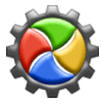
Advertising seems to be blocked by your browser.
The ads help us provide this software and web site to you for free.
Please support our project by allowing our site to show ads.
Download SiS PCI IDE Controller Computer Driver Update
| Category | hdc | |
| Device driver for | SiS PCI IDE Controller | |
| Release date | 6-20-2003 | |
| Windows version | Windows 2000 (5.0) 32 bit | |
| Manufacturer | Silicon Integrated System | |
| Version | 5.0.2195.1 | Download |
Description extracted from Wikipedia:
Silicon is a chemical element with the symbol Si and atomic number 14. It is a hard, brittle crystalline solid with a blue-grey metallic lustre, and is a tetravalent metalloid and semiconductor. It is a member of group 14 in the periodic table: carbon is above it; and germanium, tin, and lead are below it. It is relatively unreactive. Because of its high chemical affinity for oxygen, it was not until 1823 that Jöns Jakob Berzelius was first able to prepare it and characterize it in pure form. Its oxides form a family of anions known as silicates. Its melting and boiling points of 1414 °C and 3265 °C respectively are the second-highest among all the metalloids and nonmetals, being only surpassed by boron. Silicon is the eighth most common element in the universe by mass, but very rarely occurs as the pure element in the Earth's crust. It is most widely distributed in space in cosmic dusts, planetoids, and planets as various forms of silicon dioxide (silica) or silicates. More than 90% of the Earth's crust is composed of silicate minerals, making silicon the second most abundant element in the Earth's crust (about 28% by mass), after oxygen. Silicon has a residence time of about 400 years in the world-s oceans. Most silicon is used commercially without being separated, and often with little processing of the natural minerals. Such use includes industrial construction with clays, silica sand, and stone. Silicates are used in Portland cement for mortar and stucco, and mixed with silica sand and gravel to make concrete for walkways, foundations, and roads. They are also used in whiteware ceramics such as porcelain, and in traditional silicate-based soda-lime glass and many other specialty glasses. Silicon compounds such as silicon carbide are used as abrasives and components of high-strength ceramics. Silicon is the basis of the widely used synthetic polymers called silicones. The late 20th century to early 21st century has been described as the Silicon Age (also known as the Digital Age or Information Age) due to elemental silicon having a large impact on the modern world economy. The relatively small portion of very highly purified elemental silicon used in semiconductor electronics (< 10%) is essential to the metal-oxide-semiconductor (MOS) transistors and integrated circuit chips used in most modern technology (such as computers and cell phones, for example). The most widely used silicon device is the MOSFET (metal-oxide-semiconductor field-effect transistor), which has been manufactured in larger numbers than any other device in history. Free silicon is also used in the steel refining, aluminium-casting, and fine chemical industries (often to make fumed silica). Silicon is an essential element in biology, although only traces are required by animals. However, various sea sponges and microorganisms, such as diatoms and radiolaria, secrete skeletal structures made of silica. Silica is deposited in many plant tissues.


